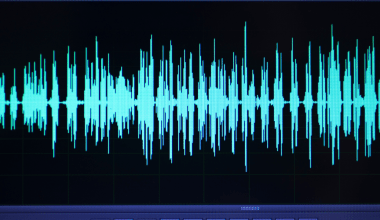Vocals are the heart of most songs. They connect listeners emotionally and deliver the message of the track. If your vocals don’t sound polished, your music may lose its impact. That’s why mixing vocals is so important.
Mixing vocals isn’t just about making them louder. It’s about balancing them with the rest of the instruments, enhancing their tone, and ensuring they shine in the mix. Whether you’re working on an extended play or trying to sell your music on Beatport, mastering vocal mixing is essential for creating professional tracks.
In this blog, we’ll explore everything you need to know about mixing vocals. From tools and techniques to creative tips, you’ll find actionable advice to improve your sound.
Understanding the Basics of Mixing Vocals
Mixing vocals is both an art and a science. It involves adjusting levels, applying effects, and fine-tuning the sound. The goal is to make the vocals clear, expressive, and balanced.
Key Elements in Vocal Mixing
- Clarity: Ensure the lyrics are understandable.
- Balance: Blend the vocals with the instruments.
- Warmth: Add character and depth to the sound.
- Presence: Make the vocals stand out without overpowering the mix.
Essential Tools for Mixing Vocals
You’ll need a few basic tools to start mixing vocals effectively. These tools help you manipulate the sound and achieve a polished mix.
1. Equalizer (EQ)
An EQ lets you adjust the frequency balance of the vocals. Use it to remove unwanted frequencies and enhance the important ones.
2. Compressor
Compression controls the dynamic range of the vocals. It ensures that softer parts are audible and louder parts don’t overpower the mix.
3. Reverb and Delay
These effects add space and dimension to the vocals. Use them subtly to avoid making the mix muddy.
4. De-Esser
A de-esser reduces harsh “s” and “sh” sounds in the vocals. This makes the performance smoother and more pleasant to listen to.
5. Saturation Plugins
Saturation adds warmth and harmonic richness to the vocals. It’s a great way to make your vocals sound more natural.
Steps for Mixing Vocals Like a Pro
1. Start with a Clean Recording
The foundation of great vocals is a clean recording. Use a high-quality microphone in a treated space to capture the best sound possible.
2. Gain Staging
Set the volume of your vocal track to a consistent level before adding effects. This ensures that the signal is neither too loud nor too soft.
3. EQ the Vocals
- Cut out low-end rumble using a high-pass filter (below 80 Hz).
- Boost the midrange (around 1-3 kHz) for clarity.
- Add sparkle by boosting high frequencies (8-12 kHz).
4. Apply Compression
- Use a ratio of 3:1 or 4:1 for gentle compression.
- Set the attack and release times to suit the performance.
5. Add Effects Sparingly
Reverb and delay can make vocals sound bigger. However, too much can drown them. Start with short reverb times and low mix levels.
6. Automate for Dynamic Performance
Automation helps you adjust volume and effects throughout the track. Use it to emphasize key phrases or smooth out transitions.
Creative Tips for Mixing Vocals
1. Layer Your Vocals
Layering vocals can add richness and depth. Double the main vocal or add harmonies to create a fuller sound.
2. Use Parallel Compression
Blend a heavily compressed version of the vocal with the original track. This technique adds punch without losing dynamics.
3. Experiment with Vocal Effects
- Try pitch correction for subtle tuning.
- Add distortion for grit and energy.
- Use creative delays for unique textures.
Common Mistakes to Avoid When Mixing Vocals
Even experienced producers can make mistakes when mixing vocals. Here are some pitfalls to watch out for:
- Overuse of Effects: Too much reverb or delay can make vocals sound distant.
- Ignoring the Mix Context: Always mix vocals in the context of the entire track.
- Over-Processing: Avoid over-EQing or compressing, which can make vocals sound unnatural.
How Mixing Vocals Enhances Your Music Career
If you’re planning to sell your music on platforms like Beatport, well-mixed vocals are crucial. Listeners expect professional-quality sound, especially in genres like pop, R&B, and electronic music. A polished vocal mix can set your tracks apart and attract more fans.
Advanced Techniques for Mixing Vocals
1. Mid-Side EQ
Use mid-side EQ to enhance the stereo width of your vocals. Boosting the sides can make the mix feel more spacious.
2. Vocal Chops and Sampling
Chopping vocals and using them as rhythmic elements is a popular trend. This technique works well in electronic and dance music.
3. Sidechain Compression
Sidechain the vocal to other instruments to create space in the mix. This is particularly useful in bass-heavy tracks.
Mixing Vocals for Different Genres
Every genre has unique requirements for vocal mixing. Here are some tips for popular styles:
- Pop: Focus on clarity and brightness. Keep vocals upfront in the mix.
- Hip-Hop: Add punch and energy with parallel compression.
- Electronic: Use creative effects like filters and modulation.
- R&B: Add warmth and emotion with saturation and reverb.
Conclusion:
Mixing vocals is an essential skill for any producer or artist. It takes time and practice, but the results are worth it. By following the steps and tips in this guide, you can create vocals that stand out.
Whether you’re working on a new single, an extended play, or preparing to sell your music on Beatport, polished vocals will elevate your tracks. Start experimenting with these techniques today, and take your music to the next level.
Related Articles:
For further reading, explore these related articles:
- Free Online Mixing Made Simple: Perfect Your Music at No Cost
- Online Mixing and Mastering Free: Your Easy Guide to Perfect Sound
For additional resources on music marketing and distribution, visit Deliver My Tune.






